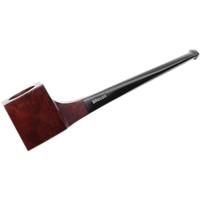hi pitch,
good questions. i think some measurable part of the apparent confusion may be due to the difference in time period involved.
my take is this: nearer in time and nearer in geography each tend towards greater credibility. there are exceptions, of course, but that's my general rule. the article i mentioned was from the original (i.e. London) trade journal Tobacco, and was printed in the December 1, 1888 issue. the article you quote was written a generation later (July 27, 1922) and three thousand miles away (in the NY version of Tobacco).
i'd also point out that by the time your article was printed the value of "london made" branding was long established, and british companies were doing whatever they could to cash in on it. and much of that "whatever" involved misleading or outright deceiving the consumer. in 1888, however, the "london made" brand was barely a twinkle in the industry's eye; in fact it was the early experiments of players like frankau and comoy that ultimately led to "london made" having commercial value.
it's also important to note that testimony during the merchandise marks hearings suggest that at the time your article was published true completely-uk-made briar pipes were few and far between. hence barling's incentive to gain competitive advantage over its rivals by depriving them of the ability to claim domestic origin.
jon
good questions. i think some measurable part of the apparent confusion may be due to the difference in time period involved.
my take is this: nearer in time and nearer in geography each tend towards greater credibility. there are exceptions, of course, but that's my general rule. the article i mentioned was from the original (i.e. London) trade journal Tobacco, and was printed in the December 1, 1888 issue. the article you quote was written a generation later (July 27, 1922) and three thousand miles away (in the NY version of Tobacco).
i'd also point out that by the time your article was printed the value of "london made" branding was long established, and british companies were doing whatever they could to cash in on it. and much of that "whatever" involved misleading or outright deceiving the consumer. in 1888, however, the "london made" brand was barely a twinkle in the industry's eye; in fact it was the early experiments of players like frankau and comoy that ultimately led to "london made" having commercial value.
it's also important to note that testimony during the merchandise marks hearings suggest that at the time your article was published true completely-uk-made briar pipes were few and far between. hence barling's incentive to gain competitive advantage over its rivals by depriving them of the ability to claim domestic origin.
jon












